Emptiness and No-Self: Nāgārjuna's Madhyamaka
Interview by Richard Marshall.

'A systematic reason for why Madhyamaka has become so influential is that is pushes one idea, namely that some objects exist only in a secondary, derived way, but not in a primary, substantial way as far as it can go, so that it in the end it subsumes all objects under the category of secondary existence.'
'When the Mādhyamikas say that some object is empty they deny that this object is independent, self-sufficient, or intrinsically existent. For Madhyamaka all entities are empty, and this implies that the emptiness of all things must itself be empty as well.'
'The emptiness of emptiness is interesting as a response to the Madhyamaka dilemma because of its meta-philosophical implications. It forces us to re-examine our conception of what philosophical theories are and what they do. The theory of emptiness certainly looks like a very general and very comprehensive metaphysical theory. And if we consider it from the perspective of Western metaphysics we are all familiar with, it is unclear how we could say that such a theory is not making the claim that it is ultimately true.'
'In true Madhyamaka fashion, logic is no more grounded in the fundamental nature of reality than anything else is. Yet the Mādhyamikas need not themselves accept that there is anything ontological weighty about logical laws to use them in their reasoning.'
'When ancient Indian thinkers composed commentaries on previous works their aim was often not just to spell out and explain the position of their authors, but to connect the philosophical concerns of the text commented on with the concerns of their contemporary audience. I think this is good model for our own engagements with ancient Indian philosophical texts.'
Jan Westerhoff'sresearch focuses on philosophical aspects of the religious traditions of ancient India. Much of his work concentrates on Buddhist thought (especially Madhyamaka) as preserved in Sanskrit and Tibetan sources, he also has a lively interest in Classical Indian philosophy (particularly Nyāya). His research on Buddhist philosophy covers both theoretical (metaphysics, epistemology, philosophy of language) and normative aspects (ethics); he is also interested in the investigation of Buddhist meditative practice from the perspective of cognitive science and the philosophy of mind. Here he discusses Madhyamaka, its “non-self theory”, ‘universal emptiness’, the emptiness of emptiness, knowledge, whether the Madhyamaka theory of universal emptiness undermines fundamental Buddhist beliefs, negation, the ‘no-thesis’ view of language and truth, the metaphysical system Madhyamaka defends, Nāgārjuna’s approach to personal identity, the Perfection of Wisdom (prajñāpāramitā) texts, illusion and trickery, whether Nāgārjuna foresaw the Matrix, Nāgārjuna and non-classical logic, and the best way of approaching an ancient intellectual tradition.
3:AM:What made you become a philosopher?
Jan Westerhoff:My interest in philosophy goes back to the twin events of coming across a copy of Wittgenstein’s Tractatuson my parents’ bookshelf and reading books about Tibetan Buddhism after a trip to India. (It only occurred to me much later how much the terse crypticism of the early Wittgensteinand the stacks of exegesis it has generated resembles the condensed sūtra-style texts of Indian scholasticism and the commentarial hierarchies flowing from them.) In the case of the TractatusI wanted to understand the results in logic, philosophy of language, and philosophy of mathematics that provide the background for Wittgenstein’ssystem, and this is why I started reading philosophy at Cambridge, a department with a strong and almost exclusive focus on the technical sides of analytic philosophy. In the case of the Buddhist materials it seemed to me that these texts contained very sophisticated and complex philosophical arguments.
Yet that the way they were presented in Western languages often made them appear either as somewhat simplistic attempts to answer questions the Western tradition has successfully resolved centuries ago, or as hermetically closed conceptual systems dealing primarily with scholastic epiphenomena of their own making (the rendering of svabhāvaas ‘inherent existence’ is a case in point — nobody trained in the Western tradition will know what ‘inherent existence’ is supposed to be and why it is philosophically interesting.) So I was interested in trying to bring out the complexity of these texts in a way that showed their relevance to contemporary Western philosophical problems and concerns. For this reason I studied Western philosophy (with a particular focus on metaphysics and the philosophy of logic) and Buddhist thought and languages (Sanskrit and Tibetan) more or less side by side, and my main motivation then and now is to bring these two together, hopefully for the benefit of both.

3:AM:First of all, could you give us a bit of information regarding Madhyamaka philosophy and Nāgārjuna. What makes it so distinctive as a Buddhist philosophy and why and how has it been so influential?
JW:Buddhism is famous for its “non-self theory”, the view that there is no substantial self or person, no locus of agency or responsibility that is substantial, unified and temporally extended. Instead of this there is only a causal sequence of a shifting coalition of physical and mental stuff, and on this causal sequence the notion of “I” or “self” is superimposed. The terms “I” or “self” are erroneously superimposed to the extent that we connect with them ideas of independence, permanence, and so on that this merely nominal self lacks.
In Madhyamaka, a school of Buddhist thought founded in the 2ndcentury CE by the Indian Buddhist monk Nāgārjuna this “non-self theory” that applies specifically to persons is extended into a theory that covers all entities whatsoever. What this means is that Madhyamaka denies the existence of anything that is independent, self-sufficient, or intrinsically existent. While we only apply the non-self theory to persons we can still say “OK, so perhaps persons are not fundamentally really and are merely conceptual constructs that are only real as mental labels, but there are still other things that are fundamentally real” (for Nāgārjuna’s predecessors these would have been both physical and mental things, but the details of this don’t matter right now). Madhyamaka takes all these other things away as well. If you want to phrase the point in the currently fashionable ‘grounding’ idiom, the idea is that no entity whatsoever has an ultimate ground (with the additional twist that the fact that no entity whatsoever has an ultimate ground also doesn’t have an ultimate ground!).
A systematic reason for why Madhyamaka has become so influential is that it pushes one idea, namely that some objects exist only in a secondary, derived way, but not in a primary, substantial way as far as it can go, so that it in the end it subsumes all objects under the category of secondary existence. It is fascinating to see how the Mādhyamikas carry off that argumentative move, and in fact there have been various (Buddhist and non-Buddhist) critics of Madhyamaka that have argued that it cannot be carried off. For them, Madhyamaka ends up in ontological nihilism (implausible), moral nihilism (dangerous), or downright inconsistency (self-refuting), and in order to avoid this, these critics argued, some entity has to be assumed as existing in a primary or substantial manner.
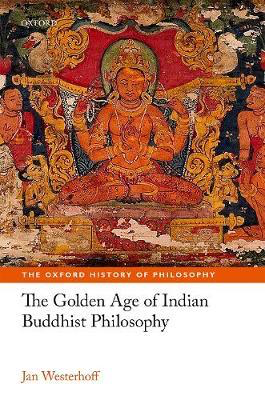
3:AM:So this key claim made by Nāgārjunais that of ‘universal emptiness’. This is the claim you've just explained, that all things without exception lack substance. This leads to what you call the ‘Madhyamaka dilemma’. Can you explain what this dilemma is and how does Nāgārjuna respond to this problem and do you find it a convincing response? And if literally everything is empty then why don’t you think this counts as a nihilist view? Is it because you find it unbelievable that a nihilist position could ever be characterised as the ‘middle way.’
JW:When the Mādhyamikas say that some object is empty they deny that this object is independent, self-sufficient, or intrinsically existent. For Madhyamaka all entities are empty, and this implies that the emptiness of all things must itself be empty as well. The Madhyamaka dilemma follows immediately: either they argue that emptiness is the one exception that is itself not empty, or, if emptiness is empty too they will end up having to consider their own central philosophical theory as only conventionally true, without being able to link up with the structure of reality at the most fundamental level. The Madhyamaka dilemma is explicitly discussed by Nāgārjuna at the beginning of one of his shorter works (the Vigrahavyāvartanī) and he embraces the second horn. Everything, including the theory of emptiness is empty, and for this reason the central Madhyamaka theory itself cannot be regarded as ultimately true, or as being rooted in some way in the fundamental structure of reality. This is does not mean, however, that the status of the theory of emptiness is somehow ‘watered down’ when compared to other philosophical theories. It is only if some philosophical theories are rooted in the fundamental structure of reality that those not so rooted could be regarded as deficient. But, as the Mādhyamika argues, since nothing could be so rooted, denying this of the theory of emptiness does not mean that it fails to live up to some standard other philosophical theories obtain.
Is saying that the theory of emptiness is itself empty a convincing response? I find it a particularly interesting response for two reasons. First, it is pushing the theory of emptiness as far as it will go. It is perfectly conceivable that someone defended a theory of emptiness that was basically a collection of local theories of emptiness, arguing that entities in domain a are not independent, self-sufficient, or intrinsically existent, that entities in domain b are not either and so on, but at the same time preserving entities in some domain n as non-empty. Domain n could consist of the most fundamental physical entities, or of abstract objects, or even just of the set of truths “entities in domain a are empty”, “entities in domain b are empty”, and so on. But this would leave one question entirely unexplained: why the arguments that were used to establish the emptiness of entities in domains a, b, and so on (which, in the Madhyamaka case, are of a very general nature) are no longer applicable when we are dealing with entities in domain n. As such, if the theory of emptiness wants to take its own arguments for emptiness seriously, they must also apply to the theory of emptiness itself. And after that there is nowhere else left to go, since everything has been declared to be empty. Of course there are numerous Buddhist and non-Buddhist opponents of Madhyamaka who argue that this has gone too far, and that the resulting theory is no longer consistent. This is another discussion to be had, but it seems clear that if Madhyamaka can carry off the self-application of emptiness, then this is the way the Madhyamaka dilemma should be responded to.
Second the emptiness of emptiness is interesting as a response to the Madhyamaka dilemma because of its meta-philosophical implications. It forces us to re-examine our conception of what philosophical theories are and what they do. The theory of emptiness certainly looks like a very general and very comprehensive metaphysical theory. And if we consider it from the perspective of Western metaphysics we are all familiar with, it is unclear how we could say that such a theory is not making the claim that it is ultimately true. If metaphysics is not in the business of ultimate truth, what are we doing when pursuing metaphysical inquiries? In the case of physics we can be instrumentalist, saying that although some theory is not literally true at the most fundamental level, it is still useful in predicting experimental results, designing mechanisms and so on. But in the case of metaphysics there does not seem to be much we can do with the theory if it is not regarded as ultimately true. At least this seems to be the case if we look at metaphysics in a familiar way. Yet we could also look at metaphysical theories not just in terms of what they say about the world, but in terms of what they do to us. This is the perspective the Mādhyamikas take, and it is one that is also not entirely unknown in the context of Western philosophy (Sextus Empiricus and Wittgenstein are two obvious examples).
Finally, does saying that everything is empty entail a form of nihilism? This is a complex question. On the one hand Madhyamaka authors themselves emphatically deny that Madhyamaka is a form of nihilism. On the other hand we find various Buddhist and non-Buddhist authors accusing them of nihilism, and to assume that they all got hold of the wrong end of the stick or willfully misinterpreted their opponents is also not very plausible. So let us try to unpack matters a bit. At the most basic level, saying that everything is empty does not say nothing exists, simply because saying that x is empty does not say that x does not exist, but that x is insubstantial, does not exist with intrinsic nature, and could not exist in a lonely state, without other entities around. Yet digging a bit deeper, if everything is empty, then nothing can exist fundamentally.
So as you go on analyzing, saying that medium-sized dry goods do not exist, throwing them out of your ontology because they are simply imputations made on the basis of molecules, and then saying that molecules do not exist, because they are simply imputations made on the basis of atoms, and then saying that atoms do not exist, because they are simply imputations made on the basis of sub-atomic particles, in the end everything gets thrown out of your ontology, and you end up with nothing. So this looks like nihilism after all. I do think the Mādhyamikas have a way to respond to this, by saying that at every level of analysis something appears (the appearances of medium-sized dry goods, if we analyze the world of our immediate acquaintance, the appearance of molecules is we analyze in a more fine-grained manners and so on) but that appearances do not exist. We can never find an appearance, only the ground of the appearance, and Madhyamaka says that there are no grounds. So I believe that there is a coherent form of nihilism that can be made to accord with appearance of the world, and that this provides a model which some (though not all) Madhyamaka authors might consider as a possible way of spelling out what the theory of universal emptiness is about. Moreover, it could be characterized as a “middle way” because it stays clear of the extreme of denying the appearance of the appearances, as well as of the extreme of asserting their existence.

3:AM:A Nyāya critic of this positionmight ask: if everything really is empty then how does he explain knowledge? After all, if epistemic access relies on perception or inference or testimony or likeness, and if each of these are empty, then any basis for claiming knowledge is empty. How can the emptiness of our typical epistemic instruments not be a drawback in any epistemic enquiry?
JW:The problem only arises if you assume that some epistemic instruments are empty, and others are not. The non-empty ones, the Naiyāyika opponent would assume, lead to knowledge because they manage to link up with the world in some objective way that is grounded in the nature of the objects known, for example by the existence of an objectively existent causal chain that links my perception of a mango with the mango’s cause (the external mango, let us assume, though its precise nature does not matter here). If now the Mādhyamaka comes along and says that his epistemic instruments are not so grounded they will obviously appear to be unsatisfactory. It is like comparing a bunch of US dollars with some banknotes we took from our children’s Monopoly – the former can actually buy stuff, while the latter are at best useful in the very specialized circumstances of one specific game.
But the Mādhyamaka denies that there would ever be a case where we would have to make this comparison. This is because it is not the case that there are non-empty and empty epistemic instruments: they are all empty. I don’t have the space here for going through all the reasons that the Mādhyamakas offer for the emptiness of epistemic instruments, but note that they block the route to grounding epistemic instruments by causation through their arguments that causation is simply not an objective relation, but essentially involves minds and conceptualization. And if this is the case then saying that our perception of the mango is the result of some causal interaction with our mango representation in here, and the real mango at the other end out there is not sufficient for establishing that the epistemic instrument of perception is non-empty.
So how can we have knowledge if all epistemic instruments are empty, as the Mādhyamaka claims? (And note that Mādhyamakas are not sceptics that say that we cannot have any knowledge whatsoever.) In the same way in which we can have economic exchanges even if all money is like Monopoly money. It is not that US dollars are intrinsically valuable, and Monopoly money is not. It is simply that a larger group of people have similar beliefs about how US dollars can be used in exchanges, and are willing to act on them, whereas Monopoly money is only believed to be good for economic transactions by the small set of people we happen to play with, within the context of that particular game. The difference lies in the way US dollars and Monopoly money are integrated in our social practices, not in the entities US dollar and Monopoly money. And it is the same, the Mādhyamika will argue, for epistemic instruments. None of them connect us in an observer-independent way with the world out there. But some of them are integrated into our practices such that the people around us will accept them as warrants for knowledge claims, while others are not so integrated. When challenged how I know that it is raining in Delhi right now I could say that I can see it because I am currently in Delhi, or that I have run a complex meteorological simulation based on the weather data from the surroundings of Delhi during the last 24 hours, and people will agree that I do indeed know that it is raining. But if I say that I have this piece of information from tea-leaf reading, or because it is raining in London, and whenever it rains in London it rains in Delhi most of the people around me will not accept that I am warranted in my belief.
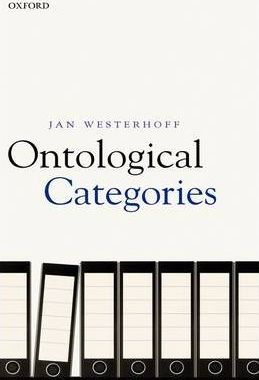
3:AM:Someone might argue that at least some things – suffering for example, and liberation - must existsubstantially. How does Nāgārjuna respond to this criticism – presumably any reasons he has are also empty so there is a bit of a problem here, isn’t there?
JW:This is in fact a criticism we find quite early in the Indian tradition: does the Madhyamaka theory of universal emptiness not undermine fundamental Buddhist beliefs? After all, Madhyamaka is not just a philosophical school, but also claims to provide a coherent explanation of the Buddha’s teaching. And this is what the problem is: for Buddhism, the problem of suffering has absolutely central status in explaining its religious worldview. But if suffering, being as empty as everything else, is not substantially real then it looks as if Buddhism’s key problem just dissipates. Why would we need to get so worked up about something that is not even fully real?
Yet Nāgārjuna points out that suffering does not even need to be fully real in order to constitute a problem. If you suffer from recurrent nightmares where you are chased by chainsaw-wielding maniacs it is of little use if I told you that these monsters are not really real. They might not be, but the emotional state they put you in is the problem, and this does not seems to be undermined by their flimsy ontological status. Madhyamaka is very clear on its claim that emptiness does not undermine phenomena’s ability to do stuff, and to cause effects. As such, there is no problem with suffering being as empty as everything else. We still need a solution to the problem of suffering, and as such the theory of emptiness leaves the Buddhist path as untouched as the claim that cars are empty of substance does not undermine our ability to drive them.
You also raise the question of the Madhyamaka position towards logic and reasoning, which is interesting. Obviously, as we have just seen, Madhyamaka responds to criticism by arguments, and tries to defend the consistency of its position. But why are they so concerned about consistency? If everything is empty, would it matter if their opponent thought that their position was inconsistent? And what is so great about consistency in any case? We can define it in terms of the laws of logic, but these are just as empty as everything else.
In true Madhyamaka fashion, logic is no more grounded in the fundamental nature of reality than anything else is. Yet the Mādhyamikas need not themselves accept that there is anything ontological weighty about logical laws to use them in their reasoning. If the aim is to convince their philosophical interlocutor of a specific point, it is sufficient to present an argument that satisfies the standards of rigour the interlocutor expects and demands. All that is necessary for the Mādhyamika’s use of logic is that he conforms to it as a theory that it is accepted by his audience.
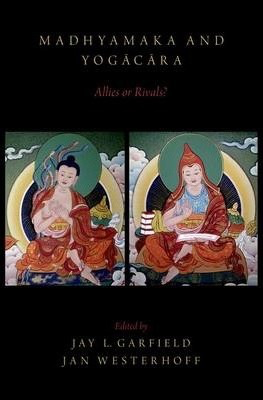
3:AM:What’s the role of negation in all this? Are there particular problems Nāgārjuna faces because of his emptiness thesis, and how does he deal with them?
JW:It is sometimes said that the Madhyamaka approach is wholly negative, that the Mādhyamakasdo not defend a position themselves but only practice philosophy in a reactive manner: as soon as somebody comes up with a theory that somewhere contains commitment to some substantial, fundamental entity with an intrinsic nature the Mādhyamaka will show that there is a hidden contradiction in this theory. Sometimes this is spelled out by saying that the Mādhyamaka employs a reductio argument, claiming that because the theory in question assumed some object with an intrinsic nature, and because a contradiction ensued, the original assumption of an object existing with an intrinsic nature has to be given up. Strictly speaking the Madhyamaka does not use a reductio argument here, for this allows you to infer, once you have demonstrated that assumption A leads to a contradiction, that not-A must obtain. And this would be problematic for the Mādhyamaka.
Suppose, to use a simple example, that somebody argues for a form of metaphysical atomism, and that the Mādhyamaka counters this by deriving some contradiction from this assumption. The Mādhyamaka will not use this as a reason to infer that there must be an infinitely descending chain of parts, parts of parts, and so on, since he would regard the idea of a substantial chain of infinite mereological descent as problematic as substantially existent atoms. For this reason, Madhyamaka distinguishes two different kinds of negation, presupposition-preserving and presupposition-cancelling negations. If I negate the proposition “the number three is red” by a presupposition-preserving negation I leave open the possibility that is might have some other colour, preserving the presupposition that numbers have colours. If I negate it by a presupposition-cancelling negation I negate the colour ascription together with the presupposition that numbers could have colours in the first place. So when the Mādhyamaka argues that some position (such as metaphysical atomism) is internally contradictory he negates it by a presupposition-cancelling negation, the presupposition cancelled being, of course, the claim that the entities discussed involve substantial existence.
3:AM:Do we need to understand his ‘no-thesis’ view of language and truth to grasp much of what he is thinking? What is this and how does it help – if it does? Is there an assumption about a realist semantics that he is challenging and therefore there are interesting things regarding philosophy of languagethat he is contributing to here?
JW:What Nāgārjuna’s claim that he has no thesis to defend means is a complex question, and different scholars in the history of Buddhist philosophy have explained it in different ways. One way of interpreting this claim, which coheres well with Madhyamaka metaphysics, is to say that Nāgārjuna’s rejection of theses is a rejection of theses that are interpreted with a specific semantics. I have sometimes referred to this semantics as the “standard view”, and it is in fact an intuitively very plausible way of thinking about the relation between language and the world. Put simply, the idea is that the world comes sliced up in specific ways (into individuals, properties, and relations, giving rise to natural kinds, or the ‘joints of nature’), that our languages has a specific deep-level structure, and that these joints of the world and the fundamental structure of language are linked up in some objective way (for example by structural isomorphism). There are obviously many variants of this position, and perhaps we should speak of a family of standard views, rather than of a single one.
In any case, some of Nāgārjuna’s opponents held views of language that can be subsumed under this picture, and I believe that in putting forward his ‘no-thesis’ view Nāgārjuna was, inter alia, setting out to undermine these positions. This is because neither the idea of a ready-made world pre-cut at the joints, nor the idea of a convention-independent link between ontological and linguistic deep structure held any appeal for the Mādhyamikas. The division of the world into its ontological joints would be a property the world has independent of anything else, yet the central aim of Madhyamaka arguments is to undermine the postulation of such independent entities. The same holds for the identity of two structures, such as world-structure and language-structure. Such identity would not only hold independent of what anybody thought of it, but also necessarily and permanently (or possibly outside of time). Again, not only do the Mādhyamikas question the existence of such necessary and permanent things, they are also concerned how they could ever link up with the contingent and impermanent entities we are all familiar with.
But if Madhyamaka rejects the standard view of word-world relations, what does it put in its place? If we look at historical Madhyamaka texts it becomes clear that they primarily set the parameters of an alternative view of language (taking the conventional nature of language seriously, rejection of appealing to anything with intrinsic nature, reluctance of adopting a sharp distinction between designation and designated) without filling in the details. This is an area where the connection between exegetical accuracy and philosophical creativity becomes particularly important. Given the insights that philosophy of language and linguistics have produced over the last century or so, is it possible to come up with an independently attractive view of language and representation that fits within the parameters of Madhyamaka metaphysics? I believe that the jury is still out on this one, but it constitutes a very interesting area for the further development of Madhyamaka ideas.
3:AM:Can you sketch for us the metaphysical system that is embedded in this approach? Is there a metaphysics or is all this really ethics – or epistemology? If Nāgārjuna denies the existence of the world are we in a radical Idealist metaphysics? Or is his approach more in line with a Husserlian phenomenology which would rid us of a merely conventional existence of the world but still have a non-Idealist metaphysics?
JW:Within Madhyamaka texts, and even just within Nāgārjuna’s body of works, actually, we find discussions of metaphysics, of ethics, of epistemology, and of a variety of other central philosophical topics. If we confine ourselves to Nāgārjuna for the moment, it is not very controversial to say that of all of these, it is metaphysics — in the form of the theory of emptiness — that is in the driving seat. It determines what views the Madhyamaka will take regarding epistemological and ethical issues.
What metaphysical system does Madhyamaka defend? Simplifying somewhat we could describe it as anti-foundationalism with a twist, that is a form of anti-foundationalism that does not simply apply to all objects, but also to all representations, thoughts, or theories of objects, and thereby applies to all truths as well (including the truth of anti-foundationalism). As such Madhyamaka opens up an interesting meta-philosophical perspective. On the one hand the Madhyamaka arguments about dependence, insubstantiality and emptiness appear to be clearly metaphysical. On the other hand we might be unsure about what metaphysics is all about if it is not about finding out the most fundamental truths concerning all that exists. But the Madhyamaka’s thoroughgoing foundationalism undermines the existence of such most fundamental truths as well. So we can either regard the Madhyamaka project as inconsistent, sawing off the philosophical branch on which it sits, or, more charitably, and also more interestingly, as undermining the metaphysical project as traditionally conceived from within, attempting to show via metaphysical arguments that the metaphysical project is fundamentally flawed.
The relationship of Madhyamaka thought with idealism is a complex one. On the one hand it is evident that Madhyamaka does not embrace a theory according to which at the fundamental level of reality, everything is mental. As the Mādhyamika denies the existence of any fundamental level, it also denies the existence of any such level that is mental. On the other hand there have been various attempts in the history of Buddhist philosophy to connect Madhyamaka thought with that of another Buddhist school called Yogācāra. Yogācāra is most straightforwardly interpreted as a form of idealism (although a form of idealism quite different from the familiar Western exemplars, such as those of Berkeley or Hegel). The way this integration is often understood is in terms of employing the Yogācāra as a propaedeutic for Madhyamaka. Roughly the idea is that an interlocutor’s investment in substantial existence can be undermined by first convincing him that everything is fundamentally mental, and that the world of medium-sized dry goods we see around us is merely a projection superimposed on exclusively mental phenomena. Once this has been accepted he is then ready for the full complexity of the Madhyamaka view according to which mind itself, the only foundation that is now left, is also not fundamentally real.
3:AM:And what is Nāgārjuna’s approach to personal identity? Does the ‘self’ survive his emptiness thesis and is it a completely different notion of the self that he works with than that found in contemporary analytic or phenomenological approaches?
JW:Buddhism is well-known for its defence of a non-self view, and this rejection of the self is something Madhyamaka shares with all other Buddhist traditions. The self rejected here is a self understood as a substantial, unified, autonomous agent. The basic argument for this denial of the self comes from the views of mereology we find in early Buddhist texts. They argued for a form of mereological nihilism, according to which parts of a whole could be fundamentally real, but wholes never were. Wholes are simply superimpositions on collections of parts, and the parts have no ontological status apart from being mere convenient fictions. The parts might have parts themselves and would therefore have to be analyzed as wholes themselves, yet the system of early Buddhist metaphysics also included parts that were fundamentally real entities. Selves were conceived to be partite too, consisting of various material and mental components linked up in complex causal patterns. As such, selves could not be fundamentally real, but must be mere fictions. Of course when we analyze selves we would eventually find some entities that are fundamentally real, but none of these would in itself qualify as a self. Madhyamaka inherits this entire account of the non-existence of the self from the early Buddhist schools, but disagrees with their claim that there are fundamentally real elements to be found at any stage of the analysis. Analysis searching for ultimate foundations will never find any, the Mādhyamika claims.
It is intriguing to note that there are various accounts of the self or person discussed in contemporary philosophy of mind that are quite close to the Buddhist non-self view. The parallels with Derek Parfit’s view are well-known (and pointed out by Parfit himself), but there is also Dan Dennett’snotion of self as the centre of narrative gravity, and Thomas Metzinger’sphenomenal self model theory. Both of these take the self to be a fictional construct, an illusion that somehow bootstraps itself into being without presupposing a prior self experiencing the illusion. A key difference between the contemporary and the Buddhist accounts of the self is that the former are generally formulated against a naturalist framework that restricts its ontological basis to that of sciences like physics, while the Buddhist accounts tend to be dualist in nature, accepting both material and mental phenomena without presupposing that the latter can always be reduced to the former. How much of a problem this is when comparing the contemporary approaches with Madhyamaka specifically, however, is not entirely clear. After all, Madhyamaka rejects the idea that any entities are fundamentally real, so we certainly would not see it as committed to the fundamental reality of the mental, nor, for that matter, to the fundamental reality of entities postulated by physics.
3:AM:We find ideas about emptiness in the Buddhist Perfection of Wisdom texts, such as the Heart Sūtra. Can you introduce us to these texts and say if there is a link between them and Nāgārjuna and a link, therefore between Nāgārjuna’s claims about emptiness and the notion of illusion found in the Perfection of Wisdom texts?
JW:The Perfection of Wisdom (prajñāpāramitā) texts are a set of highly influential texts of varying length. Some shorter versions, like the famous Heart Sūtra, are only a few pages long, while the longer versions fill entire books. The earliest of these texts might go back as far as the first century BCE, and would therefore have been scripturalized at about the same time as the Pāli canon. Buddhist tradition asserts an important linkage between the Perfection of Wisdom texts and Nāgārjuna. He is said to have retrieved them from the submarine palace of benevolent serpent-like creatures to whom the historical Buddha had entrusted them for safekeeping. Independent of the historical accuracy of this account there is an obvious and important systematic linkage between the Perfection of Wisdom texts and the philosophical works of the Madhyamaka tradition. The Perfection of Wisdom texts set out the theory of emptiness and describe its ramifications, but they do not present a great amount of arguments for why the theory is correct, or try to defend it against objections. This is a task that Nāgārjuna and his followers set out to accomplish.
Take, for example, the famous passage from the Heart Sūtra which asserts that “in emptiness there is no matter, no feeling, no notion, no formations,
no consciousness; no eye, no ear, no nose, no tongue, no body, no mind, no form, no sound, no smell, no flavour, nothing to be touched, no entities […]”. The text goes through all of the major categories postulated as fundamental entities by the early Buddhist systems and argues that none of them are indeed fundamental, since they are all empty. But we do not hear much on why these entities that earlier traditions regarded as ontological bedrock are in fact no such bedrock, nor do we get a detailed explanation of how we could do without such a bedrock. These details are supplied in the works of Nāgārjuna and authors of the Madhyamaka tradition that worked in the two millennia following him.
The Perfection of Wisdom texts frequently describe entities as being illusion-like, and central Buddhist concepts such as liberation or the Buddha are no exception. What is meant by this is not that such entities do not exist, but that their mode of existence differs from their mode of appearance. They appear to exist substantially, but when analyzed it becomes clear that they are empty and cannot exist in a manner that is independent of other entities. The Madhyamaka texts spell out what this illusory existence of entities amounts to. This is particularly challenging when concepts such as the Buddha or liberation are considered. If these are not substantially real, one might wonder, how can they constitute the goal of Buddhist practices? The answer the Mādhyamika gives to this question is the same we have already encountered before: the efficacy of an entity is not undermined by its empty nature, and so the state of liberation, for example, can both be empty and lead to the cessation of existential suffering.
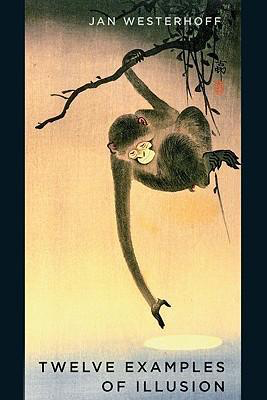
3:AM:Is your philosophical interest in the notion of illusionand trickery and Buddhism connected with your interest in accounts of reality? For example, what do we learn from philosophically thinking about the tulpa, the creation of imaginary beings that can be seen by others?
JW:In Buddhist texts we find various references to mind-made entities or persons, cases where imaginary beings are created that can then be seen by a variety of observers. What I find interesting about these accounts is to inquire what kind of philosophical background theory there needs to be in place to account for the possibility of such magical feats. It seems to me that there are two key premises involved. The first is the premise that on the proper analysis the world we see around us turns out to be fundamentally mind-made. It is something akin to a collective hallucination, a projection generated by each being in such a way that it also appears to each one intersubjectively, and not just subjectively real. This is not like an afterimage, which you alone can see, but would be as if essentially private images, like afterimages, could be perceived by more than one perceiver.
The second premiss is that with the right kind of (meditative) training it is possible to manipulate this collective hallucination in such a way that one can bring about specific projections that other beings can perceive.
Whether these two premises are true, and how to argue for them is of course another matter. I think there is quite a bit one can say in support of the first premiss, and I believe that work within cognitive science that conceives of our perception of the outside world along the ways of a brain-based simulation can be developed in this direction. This would essentially amount to trying to account for some aspects of Yogācāra theorizing on the basis of contemporary empirical research on the mind. As to the second premiss, I have no idea how to even begin to argue for this. This question involves analyzing the philosophical bases of tantric ideas, an area of Buddhist philosophy that deserves a lot more philosophical attention than it has received so far.
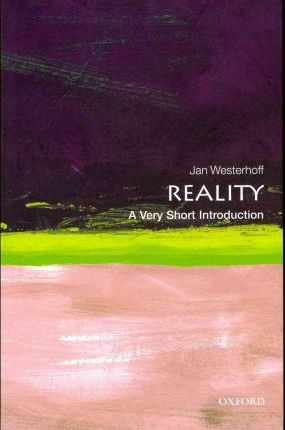
3:AM:Is the Buddhist approach to illusion similar to the modern idea of a brain generated virtual world? Did Nāgārjuna foresee the Matrix?
JW:The answer to the second question is a clear “no”. The Matrix is a classical illusion-reality scenario, where we have the simulated reality on the one hand, and the nightmarish body-farm on the other — and the second is the way the world really is. As should be clear by now, Madhyamaka does not believe that there is any such “way the world really is”, that is, an ultimately true account of the most fundamental features of reality.
However, I believe that contemporary conceptions of the world as a brain generated virtual reality can be given an interesting twist that brings such theories into the intellectual orbit of Madhyamaka. Here is how. If we assume that we live in a form of virtual reality generated by our brain then everything in the external world is subsumed under the category of brain-based simulations. And the brain itself is as much part of the external world as anything is, and therefore also part of the simulation. But in this case what initially looked like a foundationalist picture (with the brain “really there”, and everything else a mere simulation) is closed up in a loop, with the simulating entity itself being simulated. In this case we cannot determine any part of the world as ontologically fundamental anymore, and this is a thesis that the Mādhyamika has been arguing for all along.
3:AM:Is Nāgārjuna presupposing a non-classical logic, perhaps something likea paraconsistent logicor even a Meinongianone? I’m thinking of your characterisation of the the catuṣkoṭi or tetralemma from Buddhist literature which enumerates four alternatives: that some proposition holds, that it fails to hold, that it both holds and fails to hold, that it neither holds nor fails to hold. I’m also wondering about your interest in the question about whether absolutely general quantification is impossible and its implication, if true, that the world doesn’t exist. Is logic then a key to understand the ontological claims of Nāgārjuna?
JW:Considering both of these topics (paraconsistent logic and the denial of absolutely general quantification) we need to point out that we are firmly within the sphere of systematic development of the Madhyamaka position, and not in the realm of historical reconstruction. It is quite clear that the Indian and Tibetan Madhyamaka author did not assume that there could be such a thing as a true contradiction. For them, the appearance of contradictions was a problem, and as such they were committed to classical logic.
Moreover, I believe that the four alternatives of the tetralemma can be explained without recourse to dialetheist resources. Especially when we bring in the idea of the two kinds of negation referred to above some of the more its more puzzling aspects can be rendered in a relatively straightforward manner.
Nevertheless, we can introduce developments from contemporary logic and the philosophy of language that ancient Indian thinkers had no access to and use them in order to analyze and expand certain Madhyamaka arguments. This is what some researchers do when trying to spell out the Madhyamaka idea that substantial existence is a fundamentally contradictory notion by reference to dialetheism, and this is what can be done by using arguments against theories that quantify over absolutely everything in critizing ontology as an enterprise that provides us with an ultimately true theory of the world.
3:AM:As a take home, then, would you say that the best way of approaching an ancient intellectual tradition is not to try and make it fit in with current concerns but rather just study it on its own terms and let the pieces fall where they may? Or do you think that contemporary Western philosophy, for example, could benefit from interacting with these ideas?
JW:When ancient Indian thinkers composed commentaries on previous works their aim was often not just to spell out and explain the position of their authors, but to connect the philosophical concerns of the text commented on with the concerns of their contemporary audience. I think this is good model for our own engagements with ancient Indian philosophical texts. Of course it is essential to build our study of these texts on a firm philological foundation, including reliable editions, precise translations, and rich historical contextualizations. Yet in addition to these we need to be able to point out how the text’s concerns link up with our own philosophical questions, whether these are questions in metaphysics, ethics, epistemology, or some other field of philosophy. And given that our understanding of philosophy in the west in shaped by the Western philosophical tradition this means relating the positions of the ancient Indian thinkers to those of Western philosophers, not in order to set up a competition for priority, or to determine who has got it right, but use it as a possibility of making progress with answering the philosophical question at hand.
If we conceive of it in this way we can see how work on historical philosophical texts (whether they are from ancient India, from ancient Greece, or from other parts of the world) can be a genuinely creative enterprise that does not just try to present historical arguments as exhibits in the Museum of the History of Ideas, but uses ancient texts for actually doing philosophy.
3:AM:And finally, are there five books you can recommend, other than your own of course, that will help the readers here at 3:AM go further into your philosophical world?
JW:

Jay Garfield: The Fundamental Wisdom of the Middle Way: Nāgārjuna’s Mūlamadhyamakakārikā, Oxford University Press, 2005. [Probably the best book aimed at bringing Nāgārjuna’s arguments alive for the contemporary philosophical reader, presented as a verse-by-verse commentary on his most important work.]

Mark Siderits: Buddhism as Philosophy: An Introduction, Routledge, 2007. [Covers the main Buddhist thinkers and presents excerpts from their works, with a focus on the systematic features of their arguments. Admirable for its clarity of presentation.]

Jonardon Ganeri: Philosophy in Classical India: An Introduction and Analysis, Routledge, 2001. [A presentation of Classical Indian thought presented not in its historical succession, but focused on specific philosophical problems in metaphysics, philosophy of language and philosophy of logic. One of the most exciting books on Indian philosophy from the last two decades.]
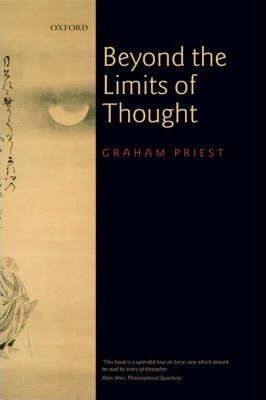
Graham Priest: Beyond the Limits of Thought, Oxford University Press, 2001. [A grand tour of philosophical thinking about the limits of our representations of the world, from Plato up to Heidegger. Includes a chapter on Nāgārjuna and is particularly interesting in its application of technical results in logic and the philosophy of mathematics to the study of philosophical problems from the history of philosophy.]
Thomas Metzinger: The Ego Tunnel: The Science of the Mind and the Myth of the Self, Basic Books, 2010. [Studies phenomena from the weird and wonderful world of consciousness studies (out-of-body experiences, lucid dreaming …) in a supremely clear manner, and with a firm basis in empirical research.]
[Archive footage of interviewer with 3:AM 'End Times' series editorial board by Sir Lennicus Bibby]
ABOUT THE INTERVIEWER
Richard Marshall is still biding his time.
Buy his new book here or his first book here to keep him biding!
End TimesSeries: the first 302